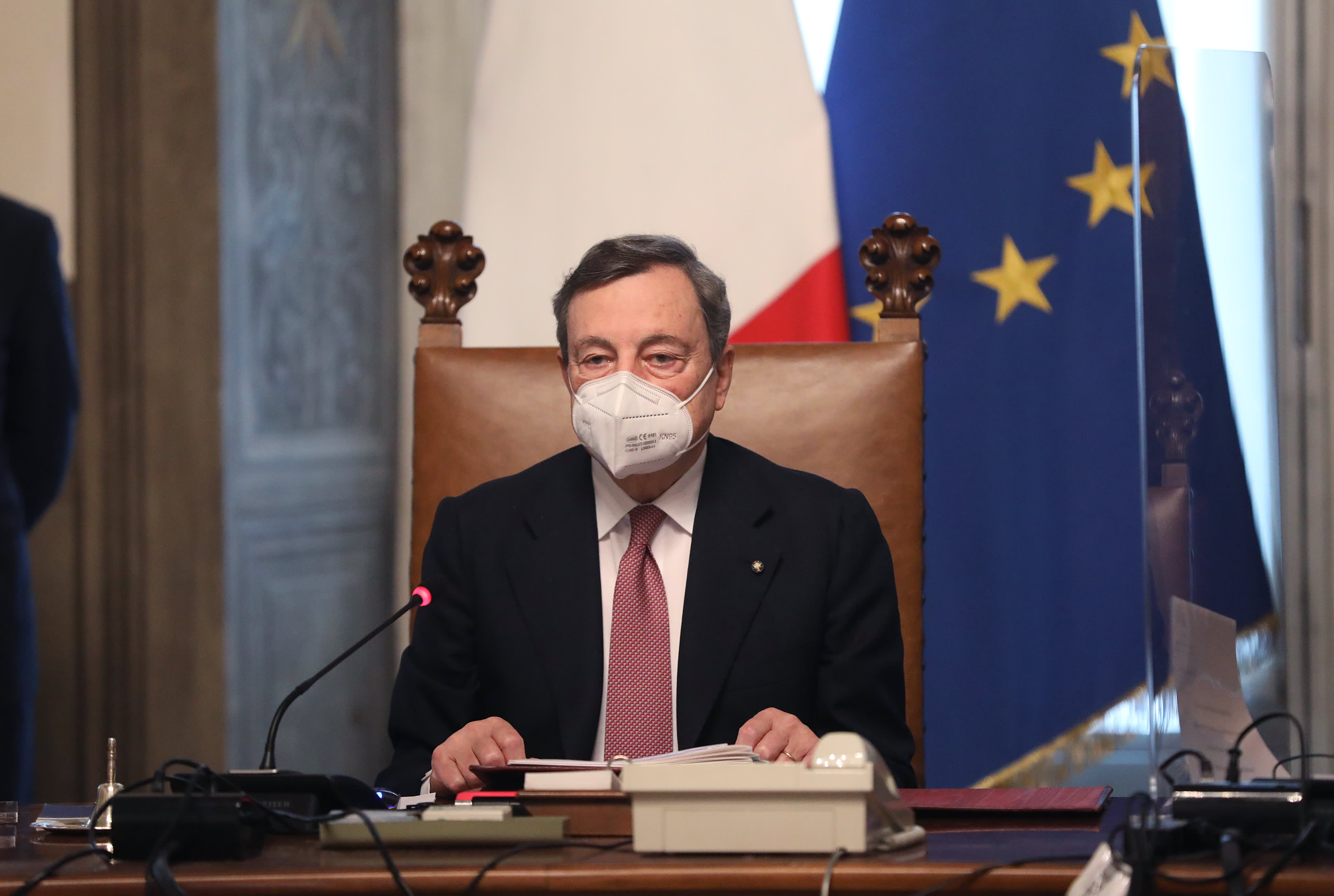
New Italian Prime Minister Mario Draghi.
Barcroft Media | Barcroft Media | Getty Images
LONDON – The new Italian Prime Minister, Mario Draghi, is already transforming the political scene in Rome and causing a rise in stock markets.
After the new political chaos, the former president of the European Central Bank was called to become the new leader of Italy and to rescue its turbulent economy. His arrival has been described as “better than expected” after gaining widespread political support and ending the threat of populist forces.
Draghi, who was sworn in on Saturday, presented his cabinet over the weekend, a group made up mainly of politicians from different parties and some technocrats also in key ministries.
“This is the best possible outcome, and better than I expected, because it provides a degree of stability and political accountability,” Erik Nielsen, chief economist at UniCredit’s group, said on Sunday.
Draghi has garnered the support of most major political forces in Italy, after worrying that a pure technocratic team would have a short life. The next general election in Italy is only to be held in early 2023.
The return of Mario Draghi, now Italian prime minister, has dramatically changed the political landscape.
By securing broad political support and a diverse team, Draghi has already improved the outlook for Italy. Analysts have become more bullish on Italian government bonds, citing “expectations of more efficient use of NGEU (next-generation EU) funds, structural reforms and a better outlook in terms of vaccination,” according to a UniCredit note.
At the same time, Italy’s main stock index has soared more than 7% since the beginning of the month.
Barclays analysts believe economic growth will also increase in the second half of the year. “The return of Mario Draghi, now Italian prime minister, has dramatically changed the political landscape,” Barclays analysts also said Monday.
They explained that the winner of the one-month political crisis would appear to be the Lega party against immigration. The more centrist PD was previously opposed to joining forces with Lega and this new unity has created tensions within the party. Meanwhile, the other big party, the Five Star Movement, saw internal divisions as it approved Draghi’s presidency last week.
Populism asleep
This could change the landscape of Italian opinion polls. Lega remains the most popular political party with approximately 24% public support. However, the Five Star Movement and the PD, which formed the previous government, could be facing a setback. PD, which enjoyed 20% of public support in January, lost one percentage point in a poll released on February 11th.
At the same time, Draghi’s arrival has also dampened populist rhetoric, at least for now.
“What we can say today is that populism is weaker in Italy both because of Draghi’s intervention and because of the intervention of the pandemic and European integration,” Lorenzo Castellani, a historian at the private university LUISS, told CNBC last week. Guido Carli.
Italy had two main populist forces in the run-up to the 2018 general election: the Lega and the Five Star Movement. But both have come to have a less anti-EU stance now, Erik Jones, a professor at Johns Hopkins University, told CNBC on Monday.
“The five-star movement made its pivot when it supported Ursula von der Leyen (President of the European Commission) in June 2019; the Lega made its pivot when it decided to support Draghi in training of an openly pro – European government of national unity last week, “he added.